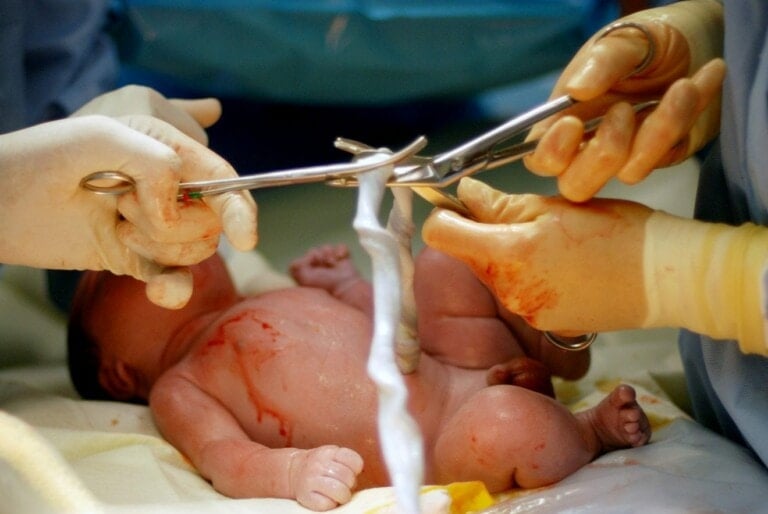If you are approaching your due date and are working on your birth plan, a question that might have caught your attention is: Would you like to delay the clamping of your baby’s umbilical cord after birth? But wait . . . why would someone want to do that? Over the past several decades, the majority of babies have had their umbilical cords clamped immediately after birth because it was thought to help reduce the risk of maternal hemorrhage. Why would we now do the opposite and delay cord clamping?
What Is Delayed Cord Clamping?

First, if you’re wondering what delayed cord clamping is, it’s when the umbilical cord is cut not earlier than 1-3 minutes after the baby’s birth, according to the World Health Organization — a practice they recommend for all births.1
Why Delay Cord Clamping?
The reasons why more parents are choosing to do delayed cord clamping are:2
- Increased hemoglobin levels
- Decreased risk of anemia
- Improves iron stores in a child’s first few months
No wonder more families and doctors are making this a standard practice after birth.
How Do You Bank Cord Blood?
But what if you have decided to bank your baby’s cord blood? You may be concerned that there won’t be enough blood for your storage collection. Are you now supposed to choose between the two and not have the benefits of delayed cord clamping if you decide to move forward with banking the cord blood? Absolutely not. Many families automatically assume they can do one or the other, but you can do both!
If you’ve been looking into these, I’m sure you’ve heard from others that you can only choose one option. But this really only applies to families planning to donate their cord blood since they have a minimum size requirement for storing cord blood donations. The amount they need for a donation is typically more than what private banks require for storage. If you privately bank your baby’s cord blood, you can reap the benefits of both options! Here’s why: Approximately 200 milliliters (mL) of blood is in the placenta and umbilical cord. A minimum of 50 mL is needed for cord blood storage.
So, you will be just fine delaying the cord clamping for 1-3 minutes and then collecting the cord blood you need for private banking. However, I do not recommend waiting much longer than 3 minutes.
If you delay the cord clamping between 1-3 minutes, there should be no problem collecting the 50 ML of cord blood for storage. That 1-3 minute timeframe transfers about 80-100 mL of blood into the baby. And that leaves your doctor enough cord blood for the collection for private banking. It’s great to know that parents can choose both options since they have fantastic benefits.
Cheers to educated decisions and healthy babies!































